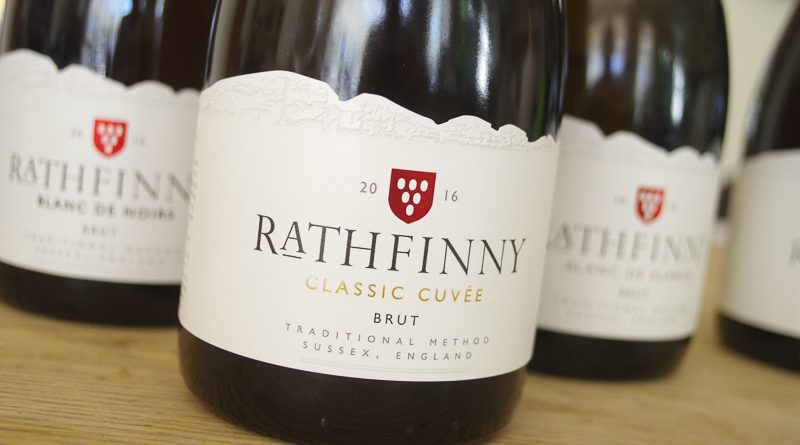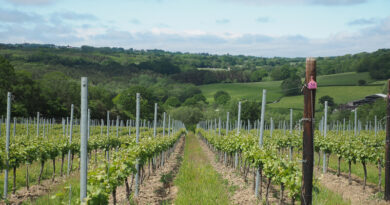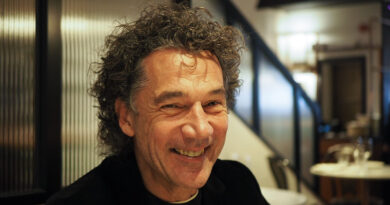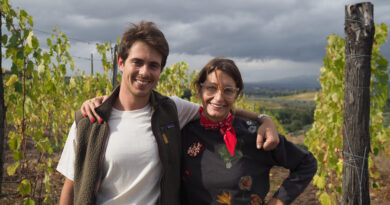Rathfinny, one of England’s top sparkling wine producers
It has been 10 years since Mark and Sarah Driver first bought the land that is now Rathfinny Estate, one of the leading sparkling wine producers in the UK. I caught up with them via Zoom to try the new releases, including the first outing for their new Classic Cuvée in its debut vintage (2016).
Rathfinny is located in the South Downs, near Alfriston. The vineyard is in a fold in the hills on a south-facing slope. Just three miles from the sea, it is partially protected from the southwesterlies by a ridge in front of them. But it’s still quite an exposed site: the proximity to the see reduces the frost risk to almost zero, but there are strong breezes than caused some problems when they were establishing the vineyard. The average wind speeds looked fine: the problem is most of the wind comes along all at once, in the afternoon.
The plan was to plant trees to act as wind breaks, but the winds prevented the trees establishing properly. So they had to borrow an idea from apple growers and put artificial windbreaks in. These are strips of rubber with gaps in – the gaps are important as they prevent votices forming. These allowed the trees to grow, and now the trees are 6 m high the artificial windbreaks can be removed. The one benefit of the wind is that the vineyard stays disease free late in the season: in 2019 while many English vineyards struggled with botrytis during a soggy harvest, Rathfinny had nice clean fruit.
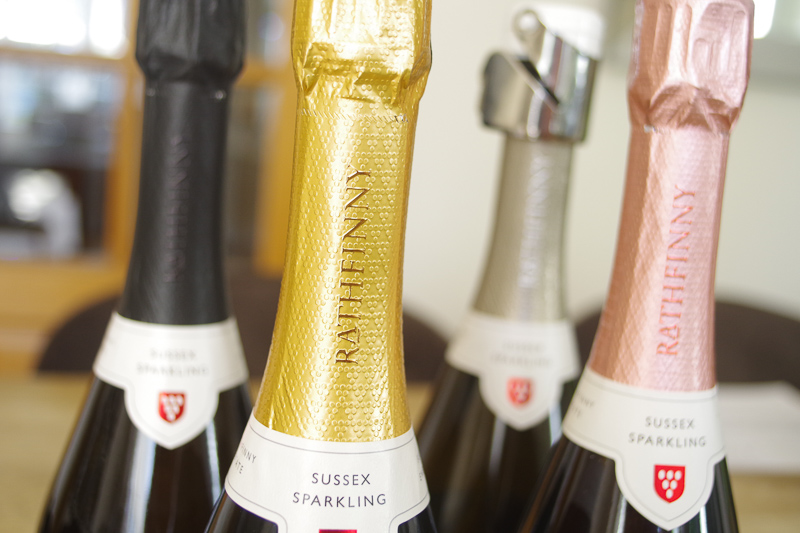
The vineyard is right on chalk, and this is the same band that comes through northern France and surfaces at Severn Sisters nearby, forming the South Downs park. There are 91 hectares under vine, but planted at a relatively low density of 2.1 x 1.2 m (4000 vines per hectare). Yields on the best mature blocks in an average year are 8 tons/hectare. They have planted 14 Pinot Noir clones, and 8 Chardonnay clones (including clone 1067, which a new one, quite terpenic, and which French nurseries wouldn’t sell to English producers – they got it via a German nursery who bought it from the French). The first 20 hectares were planted in 2012, and they’ve added new vines each year, but are now taking a planting break. There are 60 ha producing now, and in 2019 they produced 300 000 bottles. Driver expects this to double over the next 5 years.
A film of me tasting the wines:
The house style is looking for purity of fruit and no oak is used to ferment the base wines. Driver is a fan of Pinot Noir and this is the variety that drives the Classic Cuvée. Dosages are relatively low, and it works well. Rathfinny have decided not to use the non-vintage (NV) model so common in Champagne, and now becoming common in the UK, and their new Classic Cuvée is vintage. ‘My belief is that NV for sparkling wine was an accident of history that happened 100 years ago in Champagne,’ says Driver. ‘They introduced different vintages to flatten out the yield. NV is yield-driven and not quality-driven. To mne it undermines really good years.’ He adds that because Rathfinny control their own vineyard they can do green harvesting if they need to in cooler years to end up with good quality grapes. ‘Why should the sparkling wine category be different from any other bu not producing a vintage wine?’
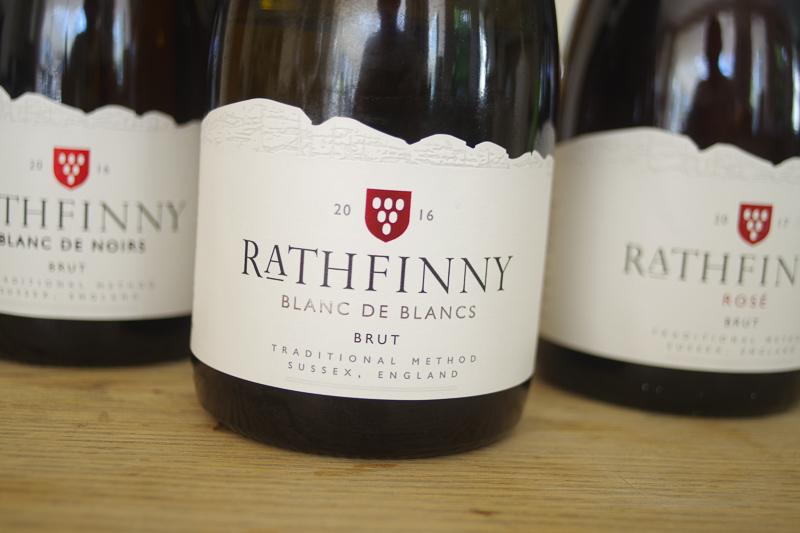
THE WINES
Rathfinny Blanc de Blancs Brut 2016 Sussex, England
12.5% alcohol. 5700 bottles. 90% Chardonnay, 8% Pinot Noir, 2% Pinot Meunier. 4 g/l dosage, disgorged February 2020. This is all about precision. It’s concentrated and intense with linear citrus fruit and keen but well integrated acidity. There’s a subtle saline minerality here with amazing purity. There are some subtle notes of pear and apple. This is chiselled and focused, but not austere. High in acid, but in balance. Really impressive: one of England’s finest, and still so early on in the life of the vineyard. 93/100
Rathfinny Classic Cuvée Brut 2016 Sussex, England
12.5% alcohol. 57% Pinot Noir, 22% Chardonnay, 21% Pinot Meunier. pH 2.96, 5 g/l dosage, disgorged January 2020. Mark Driver says that this is the ‘house style’ wine. With some colour, this is pure and focused. It’s all about fruit, with precision and intensity. Zesty, citrussy, with hints of cherries and pear fruit, kept in check with keen acidity. It’s very linear and fruity, with a hint of herbs on the finish. The acidity is pretty high here, but the richer fruit flavours stop it getting out of hand. 90/100
Rathfinny Blanc de Noirs Brut 2016 Sussex, England
Second release of this, which is 91% Pinot Noir and 9% Pinot Meunier. 3 g/l dosage, disgorged January 2020. Full yellow in colour with a hint of red. There’s some depth here, with lots of fruitiness. There are cherry and apple notes (lots of apple) as well as bright lemony fruit, and some notes of nut and honey. Complex and rich with keen acidity. Very attractive with some richness to the fruit, and plenty of flavour, with the ever-present acidity adding focus to the bold cherry and apple notes. 92/100
Rathfinny Rosé Brut 2017 Sussex, England
63% Pinot Noir, 19% Pinot Noir, 18% Pinot Meunier. 7% of this is still red Pinot Noir precoce. 4 g/l dosage, disgorged January 2020. 2017 began with frosts, then there was a mediocre summer followed by a very warm September which gave great ripeness. Quite a full pink/orange in colour. This is really elegant and fruity with cherries and redcurrants as well as sweet pear and apple fruit. There’s some nice citrus here, too, with good acidity. I like the texture and purity here: it shows lovely elegance with a supple, delicate fruitiness. 92/100
Find these wines with wine-searcher.com

